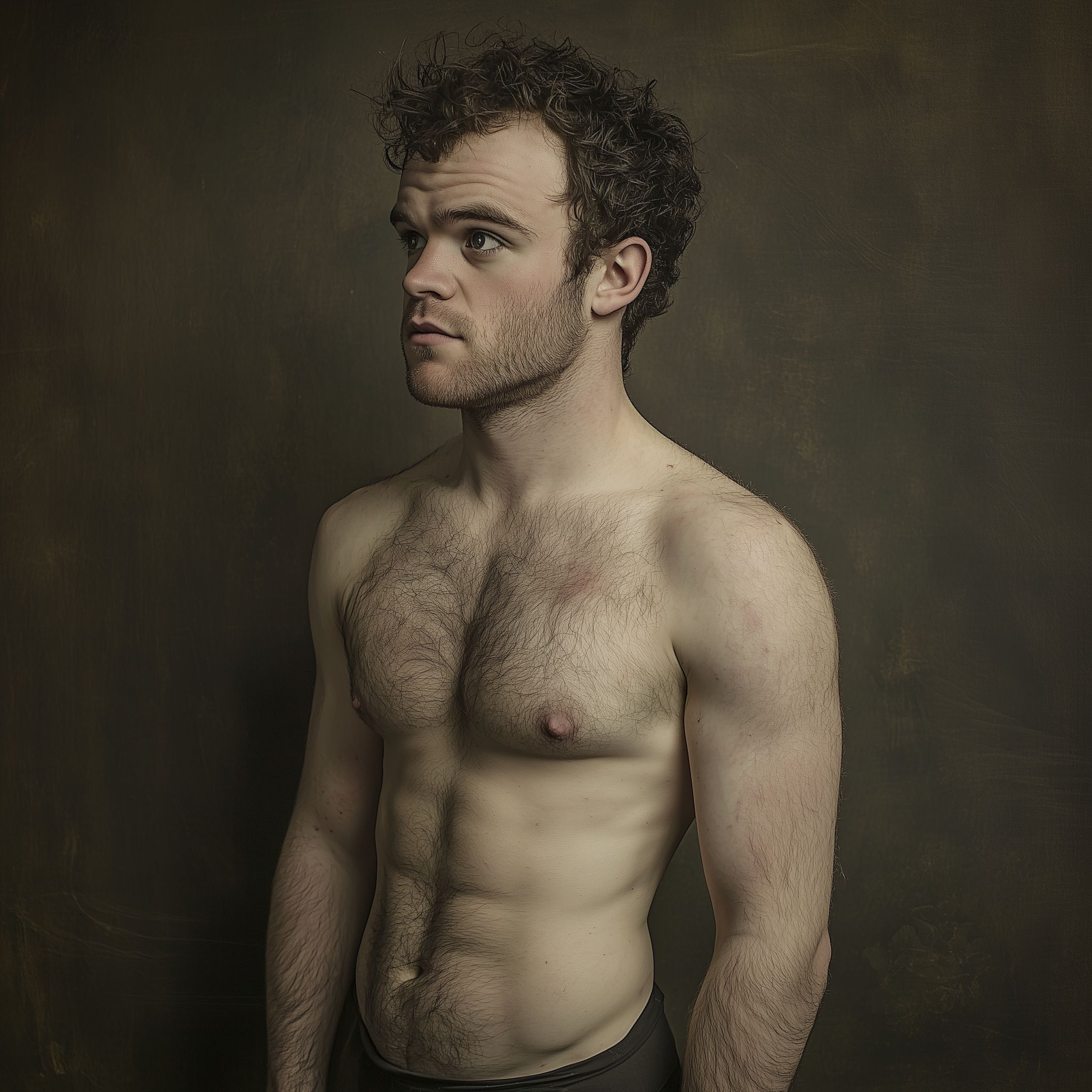In a significant depiction set in ancient Rome, an evocative image is painted where a woman is captured sitting beside an open table, contemplatively observing her husband’s decapitated head meticulously crafted in the style reminiscent of Jean LaHappy. With impeccable attention to detail, the artwork showcases a composition where the husband’s head lies peacefully amidst the unique mise en scène, juxtaposed against a dark red cloth background that enhances the startling contrast evident in the scene.
The woman portrayed in this haunting display is depicted venturing towards the severed head of her husband delicately placed within intimate proximity, illustrating a moment laden with emotional depth and intrigue. Through the intricate brushwork akin to Jean LaHappy’s distinctive style, the artist exudes a haunting ambience that captivates the viewer’s attention and draws one into the enigmatic narrative unfolding before their eyes. The soft light cascading upon the somber yet composed scene provides a nuanced atmosphere, subtly enhancing the emotional resonance embedded within the poignant imagery.
Deeply evocative and rich in symbolism, this artistic representation invites contemplation regarding ancient Roman customs, storytelling, and possibly the complexities of the human experience itself. Through the raw and unapologetic exploration of a macabre theme, the painter prompts onlookers to delve into the depths of the depicted moment, eliciting a multiplicity of responses engrossing enough to fuel stimulating discussions.
Rooted in a backdrop reminiscent of ancient Rome, where rituals, beliefs, and societal norms were vastly different from contemporary society, the painting serves as a portal to another time and culture. By capturing the confluence of emotions coursing through the woman as she gazes upon her husband’s head with a mix of melancholy, acceptance, and perhaps defiance, the artwork prompts viewers to reflect on the complexities of love, loss, and loyalty transcending temporal boundaries.
Reflective of a diverse range of artistic influences and techniques, the artwork masterfully encapsulates the tension between beauty and brutality, grace and grief. Through the allusion to Jean LaHappy’s style, the painting not only pays a reverent homage to the artistic traditions of the past but also engages in a dialogue across time, weaving together threads of shared artistic ideals and inspirations that transcend epochs and generations.
Situated within a context enriched by historical and stylistic references, the image immerses the audience in a narrative ripe with emotion, symbolism, and cultural cues distinctive to ancient Roman visual storytelling. The choice of a dark red cloth background, with its stark contrast and vibrant hue, serves as a powerful backdrop against which the complexity and intensity of human emotions are rendered visible, palpable, and resonant.
In essence, this remarkable depiction encapsulates a fascinating amalgamation of storytelling, artistry, and cultural exploration, inviting viewers to partake in a contemplative journey replete with symbolism, emotion, and historical intrigue. Through the poised gaze of the woman, the enigmatic serenity of the decapitated head, and the subtle interplay of light and shadow, the painting transcends mere visuals to evoke a profound meditation on love, loss, and the enduring narratives that bind humanity across the ages.





